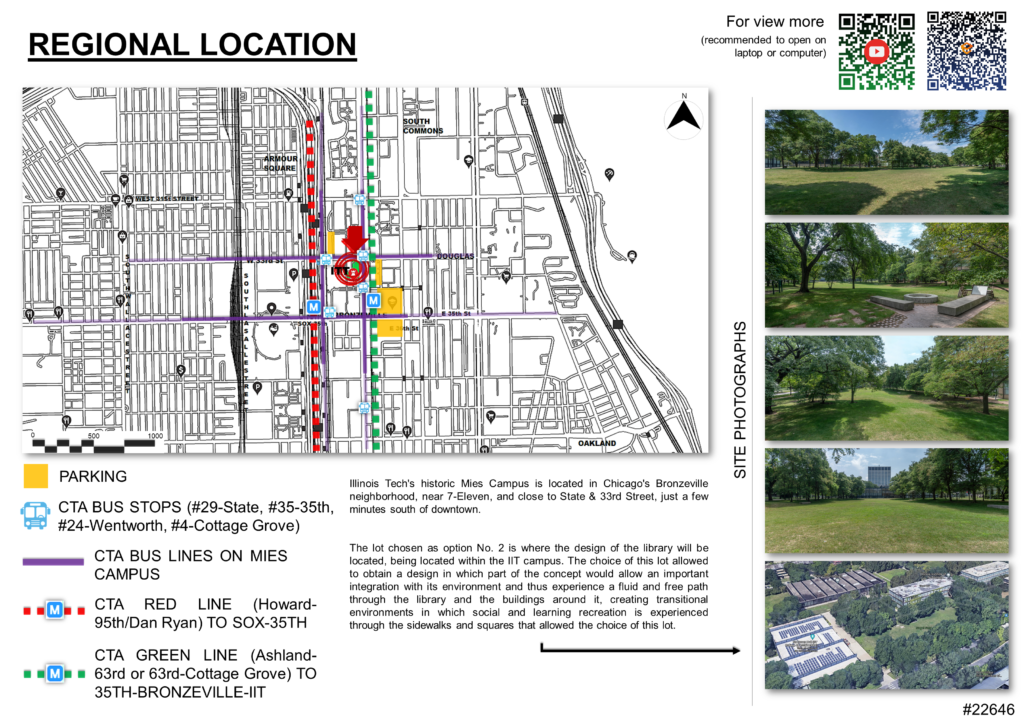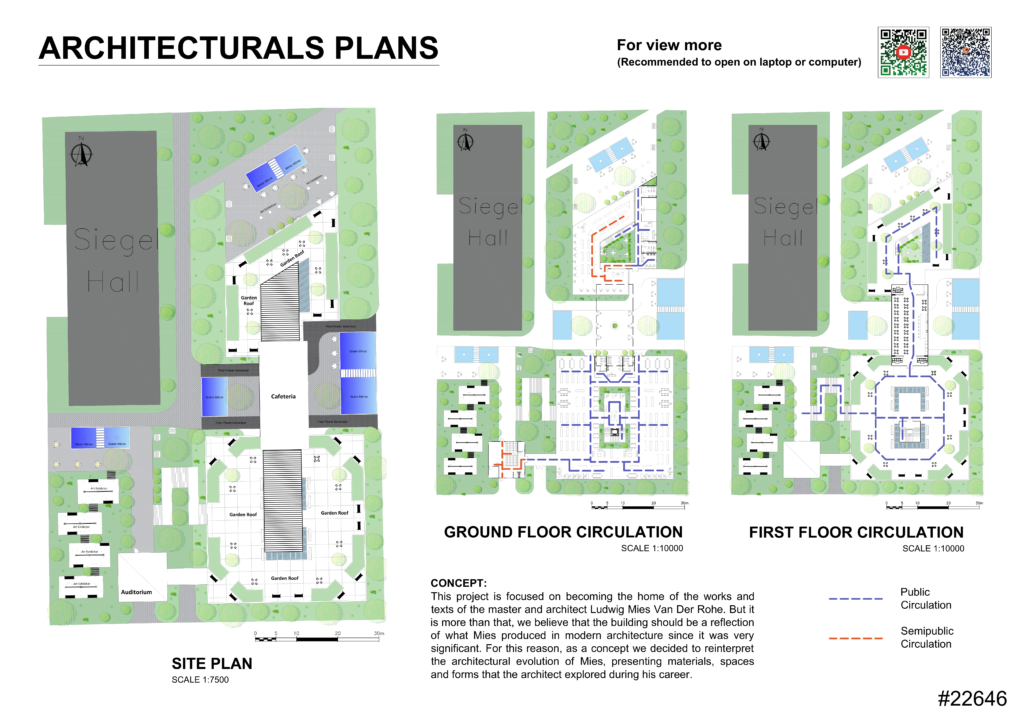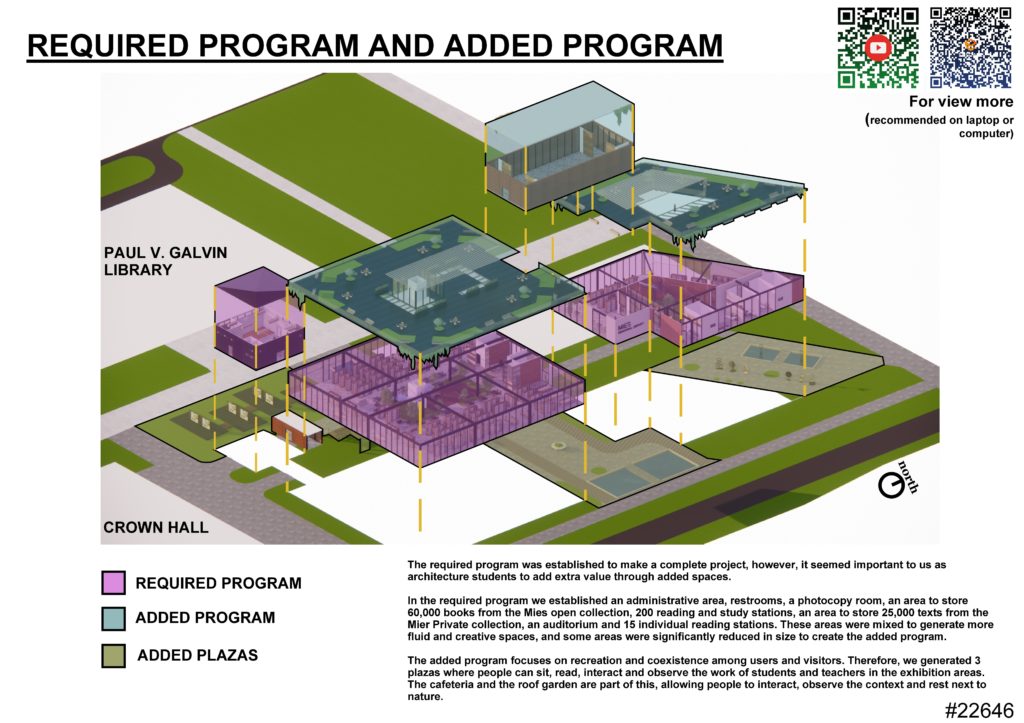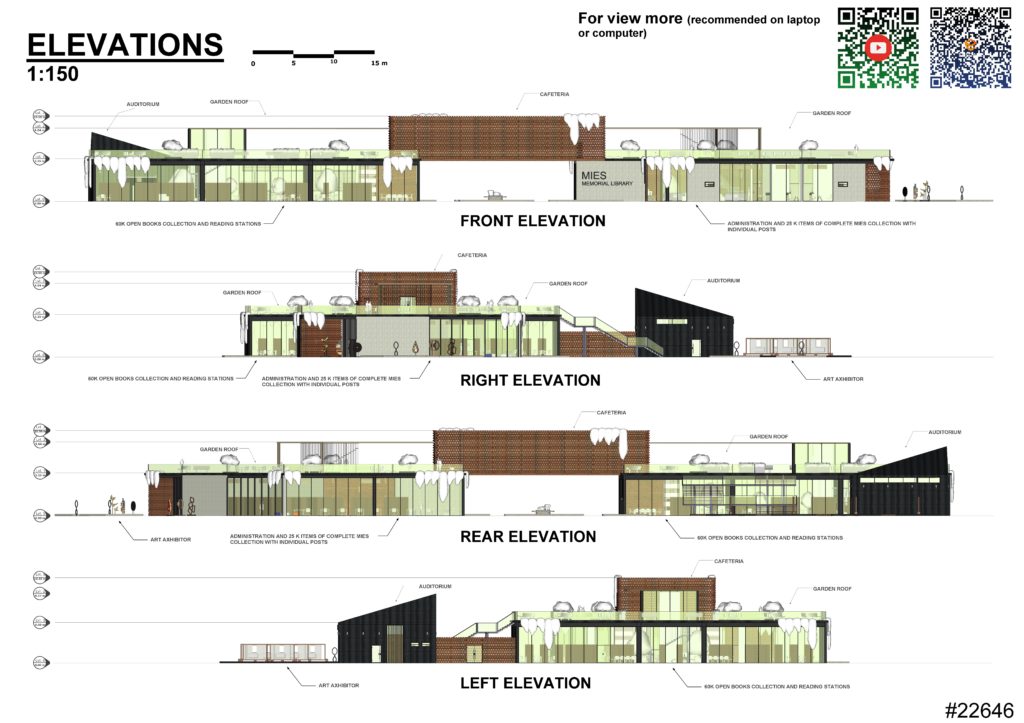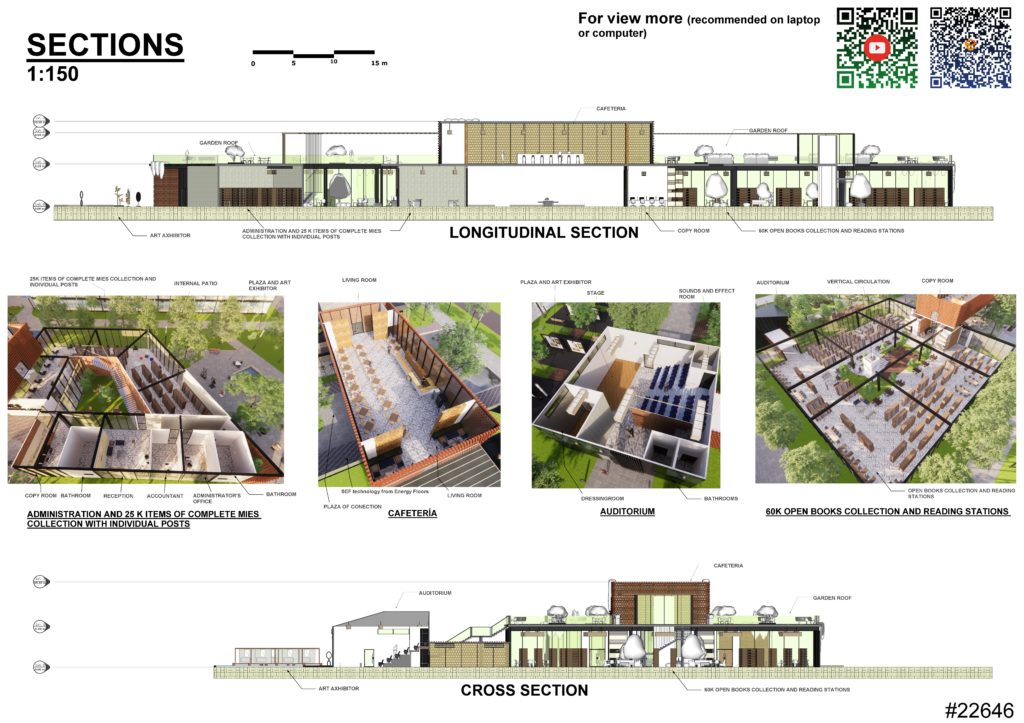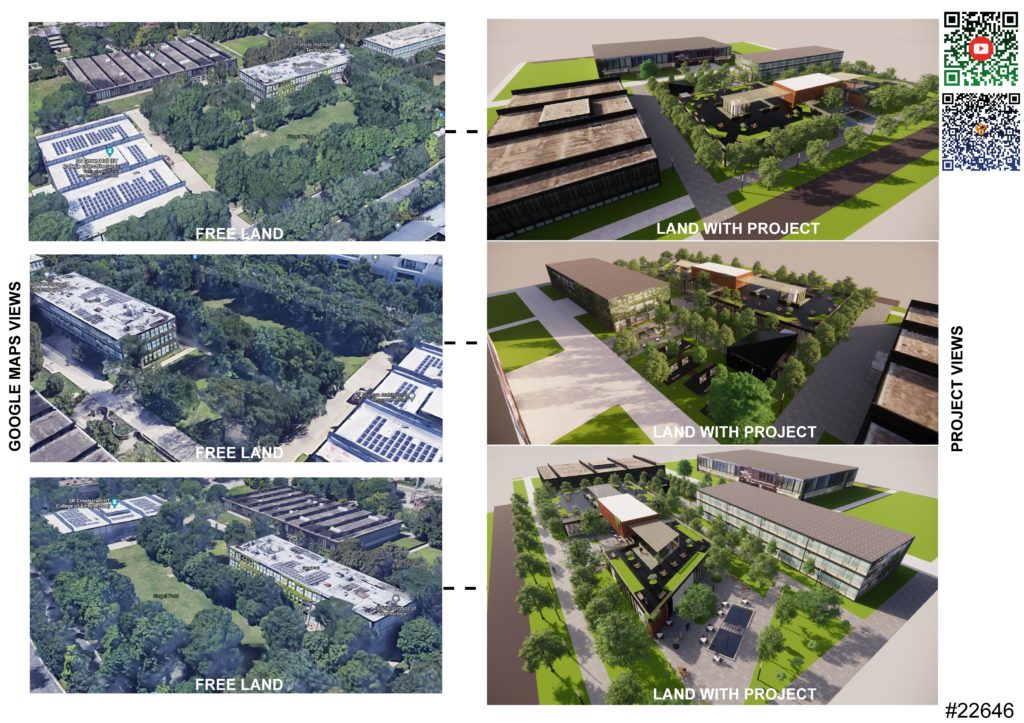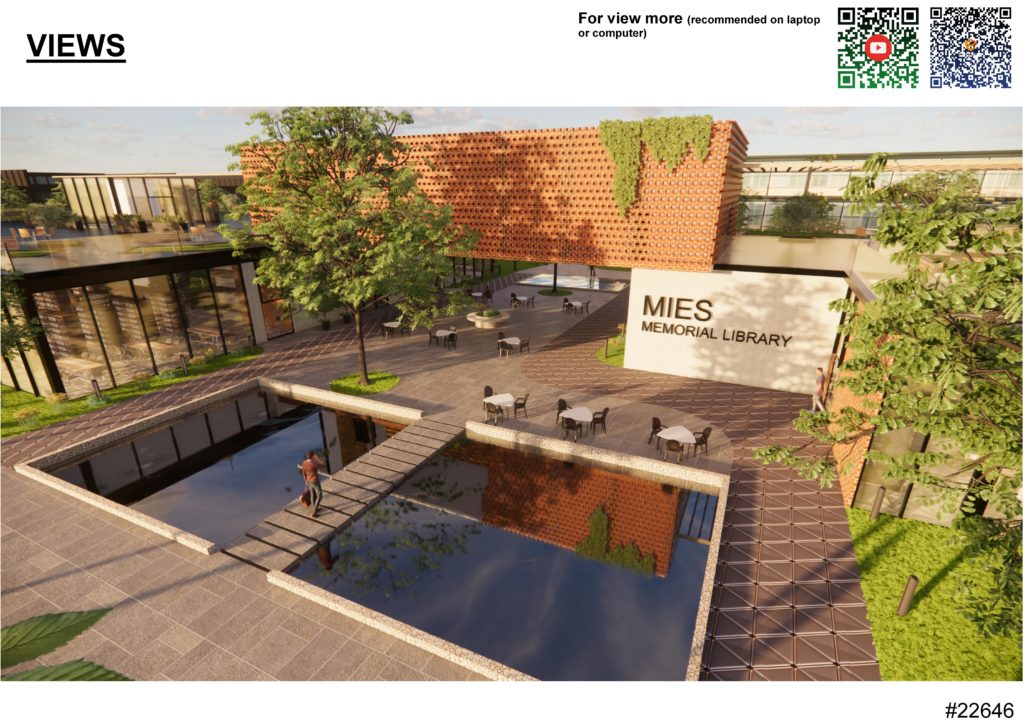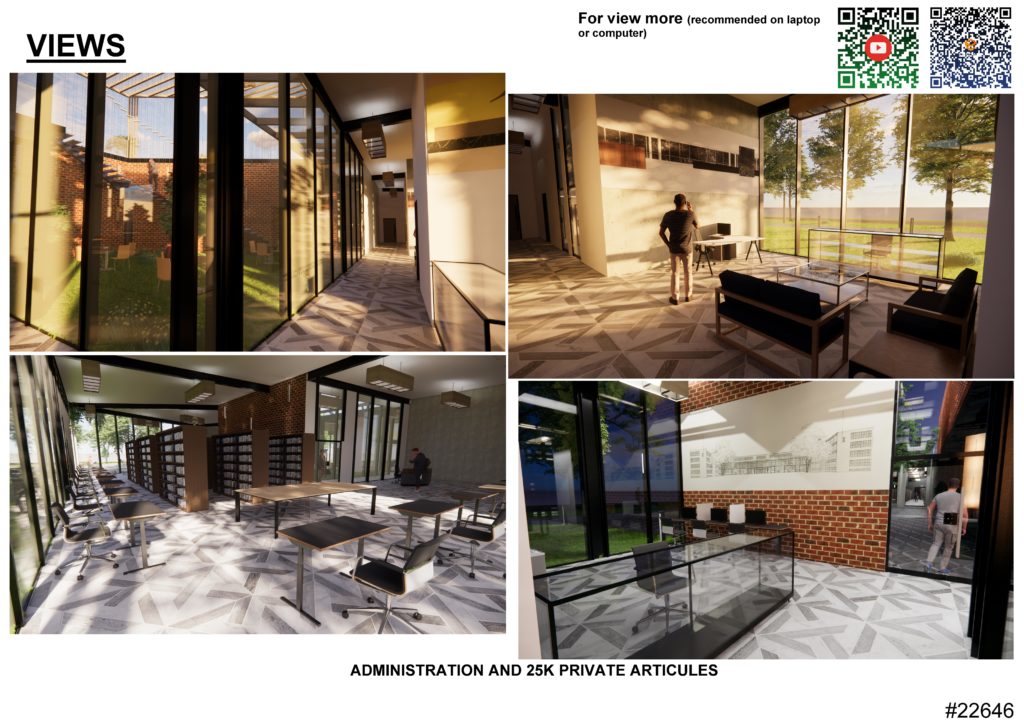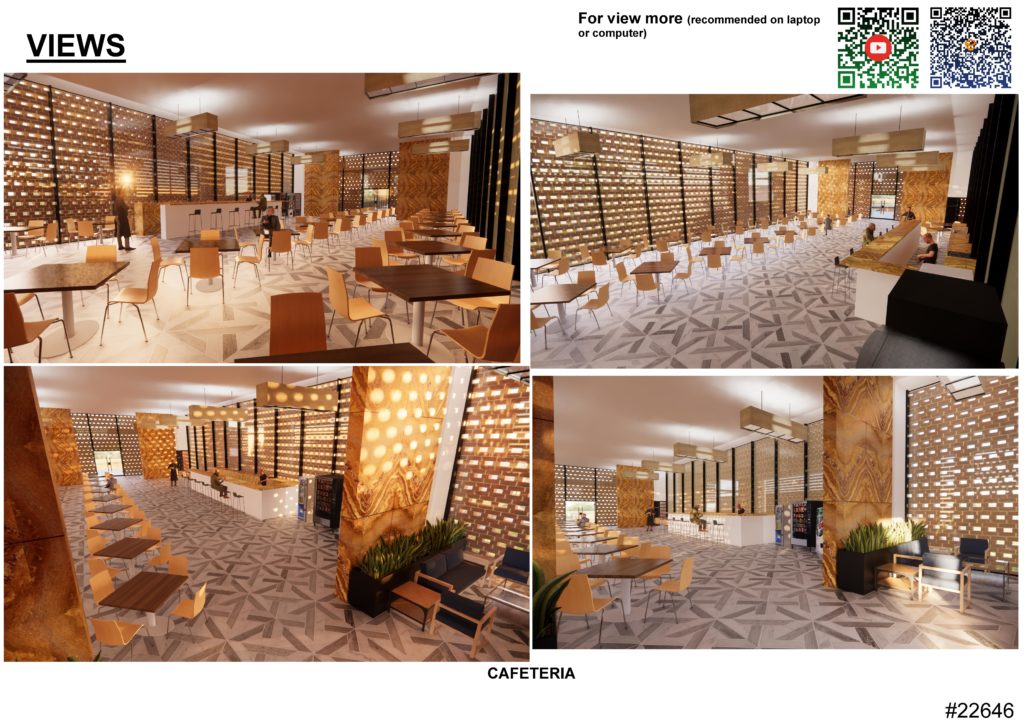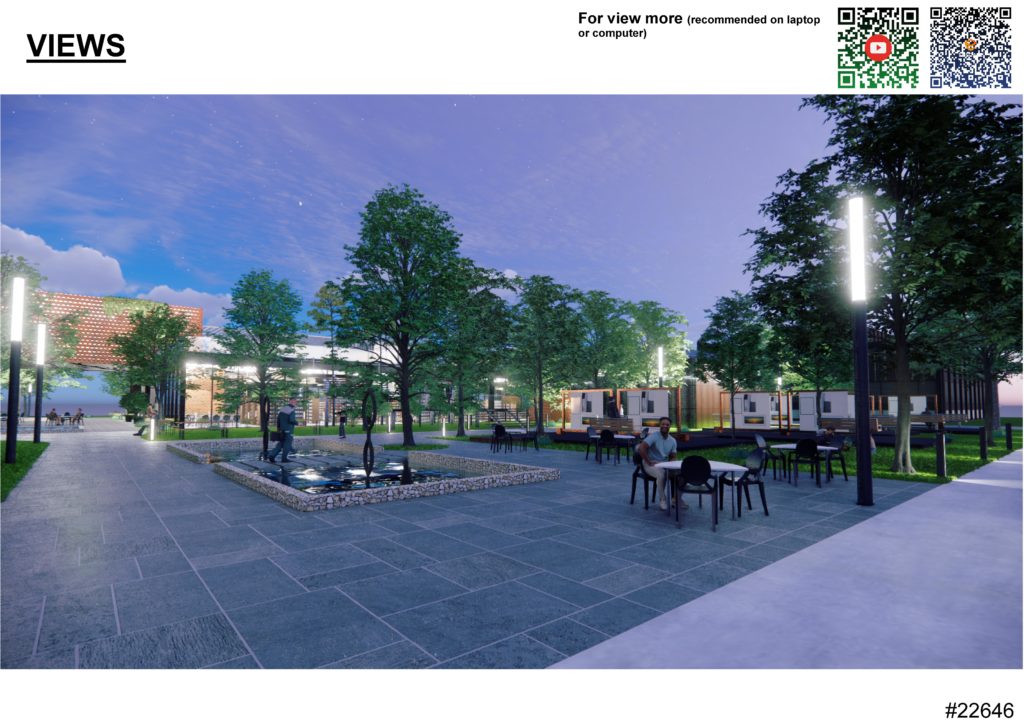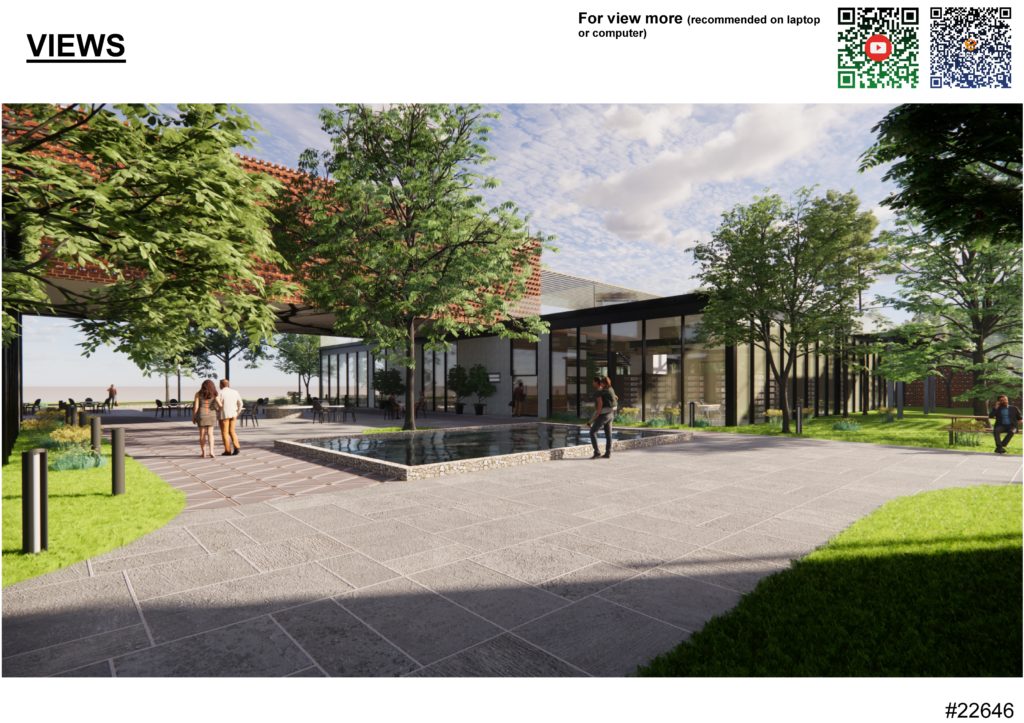CONCEPT
This project is focused on becoming the home of the works and texts of the master and architect Ludwig Mies Van Der Rohe. But it is more than that, we believe that the building should be a reflection of what Mies produced in modern architecture since it was very significant. For this reason, as a concept we decided to reinterpret the architectural evolution of Mies, presenting materials, spaces and forms that the architect explored during his career.
REFERENCES TO MIES VAN DER ROHE
The way in which we honor Mies is through some materials and elements used in a different way, which the architect used during his career. Of these we can realize as we go through the complex. We are observing some areas in which we use red brick (much used by Mies in its origins), reflecting pools (an element appreciated by Mies), travertine marble (used in the German pavilion), metal structures and continuous windows (used in the last stages of Mies). All this added to a constant relationship with current and proposed vegetation, as well as new materials.
REGIONAL LOACLIZATION
Illinois Tech’s historic Mies Campus is located in Chicago’s Bronzeville neighborhood, near 7-Eleven, and close to State & 33rd Street, just a few minutes south of downtown.
EMPLACEMENT
The lot chosen as option No. 2 is where the design of the library will be located, being located within the IIT campus. The choice of this lot allowed to obtain a design in which part of the concept would allow an important integration with its environment and thus experience a fluid and free path through the library and the buildings around it, creating transitional environments in which social and learning recreation is experienced through the sidewalks and squares that allowed the choice of this lot.
Notable sites in the area
Parking
Metered parking is available to all visitors and located along Federal Street north and south of 33rd Street, and in the Visitor’s Parking Lot (Lot A4) located at 32nd Street and State Street, on the east side of State Street.
Train
– 35th Street is located southwest of IIT.
-CTA Red Line (Howard-95th/Dan Ryan) to Sox-35th station, located southwest of IIT.
-CTA Green Line (Ashland-63rd or 63rd-Cottage Grove) to 35th-Bronzeville-IIT station, located southeast of IIT.
Bus
CTA bus lines with stops on Mies Campus (#29-State, #35-35th, #24-Wentworth, #4-Cottage Grove)
REQUIRED PROGRAM AND ADDED PROGRAM
The required program was established to make a complete project, however, it seemed important to us as architecture students to add extra value through added spaces.
In the required program we established an administrative area, restrooms, a photocopy room, an area to store 60,000 books from the Mies open collection, 200 reading and study stations, an area to store 25,000 texts from the Mier Private collection, an auditorium and 15 individual reading stations. These areas were mixed to generate more fluid and creative spaces, and some areas were significantly reduced in size to create the added program.
The added program focuses on recreation and coexistence among users and visitors. Therefore, we generated 3 plazas where people can sit, read, interact and observe the work of students and teachers in the exhibition areas. The cafeteria and the roof garden are part of this, allowing people to interact, observe the context and rest next to nature
ENERGY SUSTAINABILITY
An idea that we had in mind was the sustainability of the complex, therefore, we chose an area to insert the Sustainable Energy Floor (SEF), a fully recyclable pedestrian flooring system that can be used in crowded areas to generate electricity through footsteps, as well transform kinetic energy into usable electricity and power lighting.
PRISMATIC EVOLUTION
- The first phase consists of integrating the project into its surroundings, for this we mark in this first step the footprint of the building having as a first figure a L.
- For our group it was important to maintain the existing vegetation and replace the vegetation we affected on the site…In this phase you can see our first volume being lifted as a single figure.
- We divided the site in two to create a path through the complex and the land, the division of this site is connected by the added program. We elevated a figure above the original and proceeded to remove the lower part creating the space for a future occupation.
- We sought to achieve a correspondence between the volumes that would form a pleasant part of the surrounding design, so a different shape emerged between the auditorium and the cafeteria, but functioning as a single unit, and as a result of this, the plazas in the upper part were created.
- Having already the distribution of our areas according to the program, we proceed to form the squares and thus arise the water mirrors that aim is to reflect the connection between the building and its surroundings.
- The volumes of the building respond to the attempt to preserve the vegetation of the land and some sidewalks, seeking to adapt the project to the site. With this, we consciously increased the size of the buildings with the objective of extending this project on the site and creating a pleasant walk for the people who use it.

